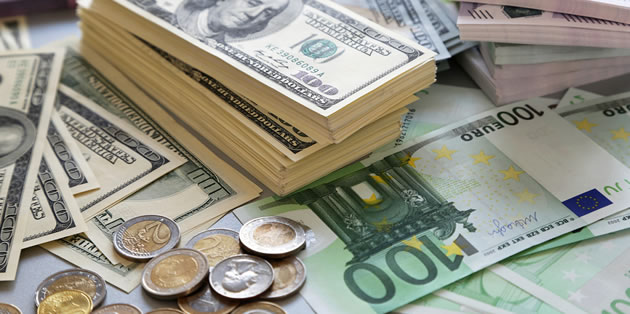EUR/USD Exchange Rate Steadies as German Economic Sentiment Falls
The Euro US Dollar (EUR/USD) exchange rate steadied today, leaving the pairing trading around $1.121 following the publication of the German ZEW survey into economic sentiment for August, which plummeted below forecast from -24.5 to -44.1 – its worst since December 2011.
Achim Wambach, ZEW’s Chief Professor, commented:
‘[The survey showed] a significantly worsened outlook for the German economic cycle… Renewed escalation in the trade dispute between the US and China, the linked risk of a global race to depreciate currencies and the higher risk of a no-deal Brexit have mingled with economic growth that was already weaker.’
As a result, Euro traders have become increasing jittery over fears of a possible recession for the German economy.
Naeem Aslam, an Analyst at Think Markets, commented:
‘The German ZEW data was completely rotten, it confirmed that the economic engine of the Eurozone has some serious trouble.’
Meanwhile, German inflation figures for July confirmed consensus by holding at 1.1%.
US Dollar Euro Exchange Rate Rangebound as US Inflation Increases in July
The US Dollar held steady against the European currency following the publication of the US inflation figures for July, which beat forecasts and rose from 2.1% to 2.2% on the year.
Month-on-month figures also beat the consensus of 0.2%, rising by 0.3%.
Katia Dmitrieva, an Economy Reporter at Bloomberg, commented:
‘A key measure of U.S. consumer prices unexpectedly accelerated in July in a broad-based advance, signalling inflation may be firming as the Federal Reserve debates whether to lower interest rates further.’
However, ongoing US-China trade tensions have remained in focus for ‘Greenback’ traders today.
US President Donald Trump appears to have left the $300bn worth of tariffs on Chinese untouched, further raising fears that the US and China will fail to reach a trade deal in the near-term.
EUR/USD Outlook: Could the Euro Sink on Weak German GDP Figures?
The Euro could sink tomorrow if the flash German GDP figures for the second quarter contract as forecast.
As Germany is the Eurozone’s largest economy, this could leave many European traders feeling skittish as the bloc’s economy continues to struggle on both political and economic uncertainties.
Tomorrow will also see the Eurozone’s GDP figures for the second quarter, which are expected to hold steady at 1.1% on the year.
Meanwhile, US Dollar traders will be keeping a close eye on global trade developments. Any signs of further flare-ups between the US and China could begin to weigh on market sentiment in the ‘Greenback’.



